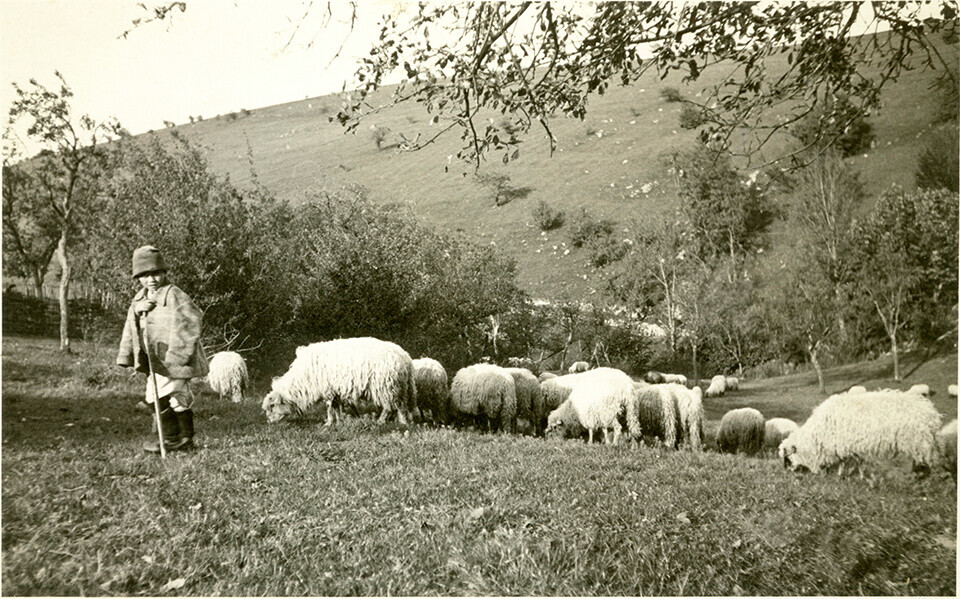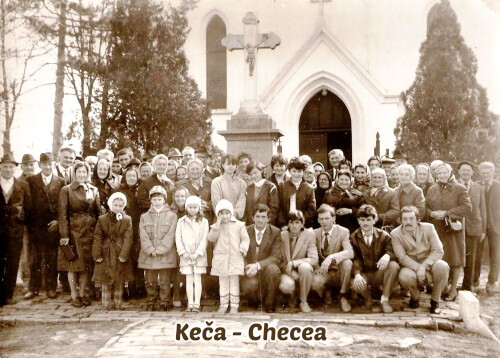Short history
Croats in
Considering their origins, historical circumstances of immigration, and linguistic and cultural characteristics, the Croatian minority in
Regardless of their mutual differences, all these groups are connected by a strong spiritual connection with Croatian identity, the preservation of folk customs, religion, and language, as well as the desire to pass these values on to younger generations. Over the centuries, they have successfully harmonized their original cultural values with the new environment in which they found themselves, thus creating a bridge between the two cultures – Croatian and Romanian.

The largest group of the Croatian community in Romania lives in the southwest of the country, not far from Reșița, the capital of Caraș-Severin County, and has a population of approximately 5,000 inhabitants, who collectively call themselves Carașoveni, or Carașoveni Croats. This compact settlement of Croats on Romanian territory is grouped in two communes close to each other, and all the places are very similar to each other: in the commune of Carașova, with the villages of Carașova, Nermed and Iabalcea, and in the commune of Lupac, with the villages of Lupac, Rafnic, Vodnic and Clocotici.
 One of the factors that contributed to the preservation of the Carașoveni on Romanian territory over the centuries is precisely the geographical compactness of the Carașoveni villages. The location of the settlements next to each other forms a compact area, with no Romanian settlements between them, and the distance to the nearest Romanian places is quite large. Since the entire area is compact, the influence of the Romanian language and the neighboring Banat dialects was only accidental and could not significantly weaken the Carașov dialect. Moreover, instead of being assimilated, the Carașov people assimilated and Catholicized the Romanians who accidentally entered their midst over the centuries.
One of the factors that contributed to the preservation of the Carașoveni on Romanian territory over the centuries is precisely the geographical compactness of the Carașoveni villages. The location of the settlements next to each other forms a compact area, with no Romanian settlements between them, and the distance to the nearest Romanian places is quite large. Since the entire area is compact, the influence of the Romanian language and the neighboring Banat dialects was only accidental and could not significantly weaken the Carașov dialect. Moreover, instead of being assimilated, the Carașov people assimilated and Catholicized the Romanians who accidentally entered their midst over the centuries.
Carașova is the main and also the oldest settlement of Croats in Romania, in some records this settlement being mentioned at the end of the 13th century. Already at the beginning of the 16th century (and perhaps in the second half of the 15th century) a Catholic institution and a Catholic order are mentioned in Carașova, which is also indicated by some historical sources.
In the distant past, almost every Croat from the Carașov community had a house in the village and a dwelling on the hills, where he kept a flock, as people tried to adapt to the infertile soil on which they were located. The main occupation was animal husbandry (pig breeding, sheep breeding), beekeeping and to some extent fruit growing, and less often they were engaged in agriculture due to the relatively infertile soil. In the past, they also practiced other activities. For example, they were known in other parts of Banat for making shingles and planks for barrels. They lived quite modestly, in ancient times they spent most of their time on the farm, rarely came to the village, only at Christmas and Easter were they all together in their localities. In the second half of the last century, the Carașovans worked in industrial factories in the city of Reșița, and recently a significant number of residents of the Carașovanți villages have been going to work abroad, mainly in Austria.
Carașova Fortress

Above the Caraș River canyon, where some of the most beautiful karst landscapes in Romania are located, there is a place steeped in history, around which numerous legends are intertwined. It is the Carașova Fortress, built on Grad Hill, in the southeast of the town of Carașova. The fortress is one of the most important tourist attractions in Banat, from inside the fortress you can observe the beauties of the Caraș River canyon and the nature that surrounds it.
It is said that the fortress was built in the Dacian era, and was later used by the Romans. The first mention of the fortress dates back to 1323, when it belonged to the Hungarian king Carol I Robert of Anjou. Over 200 years later, the fortress was conquered by the Turks, its walls were strengthened and transformed into a powerful fortress, surrounded by a precipice on three sides and with two defensive ditches dug in front of it. Since there is very little information about the Carașov Fortress, it has become the subject of numerous legends and folk tales. Thus, the locals say that the fortress walls were built from mortar mixed with wine and milk and, in this way, became “stronger than cement”. Later, the locals were intrigued by the circular shape that remained from the opening of the well, but drilling it would have required an enormous effort, since the fortress is located on a hill, 200 meters above the river flowing through the valley. From here, numerous legends about the fortress’s water supply emerged. Currently, only fragments of a thick enclosure wall remain from the old fortress of Carașova.
A brief history of the Union of Croats in Romania
The Union of Croats in Romania is the official organization of Croats in Romania, whose activities are mainly focused on preserving the ethnic identity of the Croatian minority in these areas, in all its manifest forms. The organization was founded in 1991 with the aim of uniting the Croatian community in Romania and, thus, to more successfully preserve and promote its traditions and customs.
Since 1995, the Union of Croats in Romania has been a full member of the Croatian World Congress, the highest organization of the Croatian diaspora, which aims to connect all Croats around the world and work to promote unity among Croats.
The main purpose of the Union of Croats in Romania is precisely focused on the minority it represents. Moreover, the Union is the only organization founded with the intention of representing, defending and promoting our interests, namely Croatian culture, tradition, language and identity.
As part of such an interest of the Union, in 1994, “Hrvatska grančica” was created, a bilingual publication of the Croats from the Carașova community and those from Timiș County, a magazine dedicated, above all, to the Croatian community, a periodical that is still published today and that contains in its pages the history of our places and people, a written trace of our daily life for future generations.
Regarding teaching in the Croatian language, I would like to emphasize that, as early as the 1995-1996 school year, as a result of the efforts of the Union of Croats in Romania, the operation of the Romanian-Croatian Bilingual High School in Carașova was approved, and twenty years later, the 20th anniversary of the establishment of the gymnasium in Carașova was celebrated in the headquarters of our organization.
The actions that the Union organizes annually are numerous, and on this occasion we mention just a few: weekly workshops for students, intended for children from all the villages of Carașov, chess, tennis, athletics and football tournaments, the culinary festival "Karaăevski paprikaš", the folklore festival "Along the Caraș River", cultural and scientific seminars and symposiums, "Meetings of septuagenarians from the Carașov community" and many other actions organized on the occasion of significant events in our Croatian villages.

The second group of Croatians in Romania is located in the multicultural town of Recaș, in Timiș County, in the eastern part of Timișoara, and numbers just over 100 people who live together with Hungarians, Germans and Romanians. The Croatians of Recaș are also called Šokci and are believed to have originated in Dalmatia, from where they came to Recaș in the 17th century, settling mainly in the northern and western part of the settlement, which was called Šokački kraj/strana. Throughout the 19th century and until the 1950s, they had their own school and developed a prodigious cultural and educational activity. Due to favorable circumstances, the Croats of Recaș have maintained ties with their compatriots since the beginning of the 19th century, both with those from Checa and with the Croats from Bačka, in Vojvodina.
Nowadays, unfortunately, the small Croatian community in this place is on the verge of extinction, the number of inhabitants of Croatian origin is constantly decreasing and, apart from a few elderly people, no one in Recaș uses the Croatian language anymore.
The third group of Croats in Romania are the Chechens, who live in the western part of Timișoara, right on the border with Serbia, in Checea Croată or Checia Croată (the official Romanian name), unlike Keča Română or Checia Română, from which they are separated only by a road. Only Croats lived in Checea Croată, around 300 people. It is known for certain that they came from Turopolje, around 1800, and that they spoke the Zagreb dialect Kajkavian: zači, kaj si rekal, bum išla etc.

The migration of the Chechens was not spontaneous, on the contrary, it was carefully planned and organized. Before leaving for their new homeland, the migrants even sent a delegation to ensure that they would go towards a “better tomorrow”. “And they liked it”.
In the early eighties of the last century, it was recorded that those Croats in Checea “i dendenes divanidu orvatski” (“even today they speak Croatian”), although only the older generations. However, changes in lifestyle, especially in the education system, began to more aggressively suppress the use of the mother tongue idiom, and the majority language penetrated informal social interaction, especially among the young. The older generations warned the younger ones: “Kaj sad Orvati, divanite po rumunjski” (“What Croats are you, if you speak Romanian”). Just like in Recaș, or even worse, in Checea we have nowadays about 25 people of Croatian origin, the Croatian language is no longer used in that place, and the Croatian community there is inevitably counting its last days.
